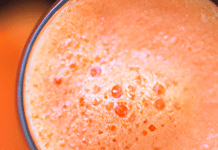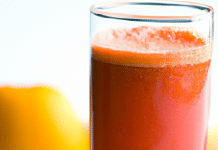Let’s talk about the not-so-sweet side of juicing. Ah, the devil in the details, the downside to all that vibrant green goodness.
We can’t deny that juicing has become wildly popular in recent years, but it’s essential to shed some light on the cons that often overshadow the numerous benefits.
From potential nutrient loss to high sugar content and even emptying your wallet, you should consider a few drawbacks before diving headfirst into the juicing craze.
So, buckle up and join us on this journey as we uncover the five cons of juicing.
Review contents
1. Nutrient Loss
When it comes to juicing, one of the main concerns is the loss of nutrients during the process. Juicing involves extracting the liquid from fruits and vegetables, which can lead to nutrient oxidation. This occurs when the nutrients are exposed to air and heat, causing them to break down and lose their potency.
In addition to nutrient oxidation, juicing can also result in fiber loss. Fiber plays a crucial role in our diet as it helps to regulate digestion and prevent blood sugar spikes. However, when juiced fruits and vegetables, the fiber content is often removed, leaving just the liquid behind. This can lead to an imbalance in our nutrient intake and potential health complications.
Another drawback of juicing is the loss of phytonutrients. These natural compounds found in plants have been shown to have numerous health benefits, such as reducing inflammation and fighting diseases. Unfortunately, many of these phytonutrients are found in the skin and pulp of fruits and vegetables, typically discarded during juicing.
2. Blood Sugar Spikes
Another disadvantage of juicing is its potential to cause blood sugar spikes. This is primarily due to the lack of fiber and the high sugar content in many fruits and vegetables. Fiber helps slow down digestion, allowing for a more gradual release of sugars into the bloodstream. However, when juicing removes the fiber, the sugars from the fruits and vegetables are absorbed more rapidly, leading to a rapid spike in blood sugar levels.
Additionally, some fruits and vegetables, such as grapes and pineapples, have a high natural sugar content. While these fruits may be nutritious in their whole form, when consumed as juice, the concentrated sugar content can quickly cause blood sugar levels to soar. This can be particularly problematic for individuals with diabetes or those trying to manage their blood sugar levels.
Furthermore, juicing often results in increased fructose intake. Fructose is a sugar found in fruits, but consuming it excessively can have adverse health effects. Studies have shown that high fructose intake can lead to insulin resistance, weight gain, and an increased risk of developing metabolic syndrome. Therefore, it’s essential to be mindful of the fructose content when juicing fruits.
3. Nutritional Imbalances
Following a juice-only diet can lead to nutritional imbalances as certain essential nutrients may be missing. While fruits and vegetables are packed with vitamins and minerals, they do not provide a complete range of essential nutrients for optimal health. For example, a juice-only diet typically lacks sources of healthy fats and complete proteins.
Additionally, juicing may limit the variety of nutrients consumed. While it may be tempting to stick to a few favorite fruits and vegetables, this can lead to a monotonous intake of nutrients, potentially resulting in deficiencies in specific vitamins and minerals. It is essential to have a diverse and well-rounded diet to ensure all nutrient needs are met.
Moreover, inadequate protein intake is a common concern with juice diets. Protein is essential for various processes in the body, including building and repairing tissues, supporting the immune system, and regulating hormones. However, most fruits and vegetables are low in protein, which makes it challenging to meet the daily protein requirements solely through juicing.
4. Calorie Intake
Another factor to consider when embarking on a juice-only diet is calorie intake. While fruits and vegetables are generally low in calories, juices can still contribute to a higher calorie intake than expected. This is especially true when using large amounts of high-calorie fruits, such as bananas or avocados, in the juices.
Liquid calories can be deceptive as they do not have the same satiety factor as whole foods. When we consume solid foods, our body has to work to break them down, which results in a feeling of fullness and satiety. However, juices are quickly absorbed by the body, which can leave us less satisfied and potentially lead to overconsumption of calories.
Moreover, unbalanced caloric intake can be a concern with juicing. While fruits and vegetables provide essential vitamins and minerals, they may not provide sufficient calories or macronutrients like fats and proteins. This can result in malnutrition or an imbalance in energy levels, negatively affecting overall health and well-being.
5. Cost and Accessibility
Juicing can also present challenges in terms of cost and accessibility. Investing in a quality juicer and purchasing fresh, organic fruits and vegetables can be expensive. Juicers come in various models and prices, ranging from essential to high-end options. Additionally, organic produce has a higher price tag than conventionally grown fruits and vegetables.
Another drawback is the short shelf life of juice. Once fruits and vegetables are juiced, their freshness and nutritional content degrade rapidly. Consuming freshly made juice immediately is recommended, or storing it in an airtight container in the refrigerator for up to 24 hours. This can require a significant amount of time and effort, especially for individuals with busy schedules.
Furthermore, limited access to fresh ingredients can be a hindrance for some individuals. Not everyone has easy access to various fresh fruits and vegetables, especially those living in food deserts or remote areas. This lack of accessibility can make it difficult for individuals to consistently follow a juicing regimen and receive the desired nutritional benefits.
In conclusion, while juicing may seem convenient to boost nutrient intake, it’s essential to consider the potential drawbacks.
Nutrient loss, blood sugar spikes, nutritional imbalances, calorie intake, cost and accessibility, potential health risks, weight loss plateaus, lack of sustainable lifestyle, unrealistic health claims, and disruption of regular eating habits are all factors to consider before adopting a juice-only diet.
It’s crucial to prioritize a well-rounded, balanced diet that incorporates a variety of whole foods to ensure optimal health and avoid potential complications.
































